By Javier Roman-Nieves, ecological communications specialist
At the time of this writing, the Intergovernmental Panel on Climate Change—the world’s leading authority on climate science—had just issued its latest report on our ongoing climate catastrophe. More than eight years in the making and based on the peer-reviewed work of hundreds of researchers around the world, the report’s findings are the direst yet. The 2015 Paris Agreement goal of stopping temperatures from rising more than 1.5° C, or between 5.4°F and 8°F, is now out of reach, with the effects already being felt here in the Long Island Sound region and only poised to worsen.
That is, unless we take bold and immediate measures to reduce greenhouse gas emissions. Reigning in pollution emitters and transitioning to a carbon-free economy will lessen the chaos of increased natural disasters, disruption of supply chains and food production, and the associated human suffering and displacement already underway. That, and a renewed approach to undoing the harm we have already caused to so many of the planet’s natural ecosystems and using the resilient power of nature to adapt human communities to our new climate normal.
With that vision in mind, and in celebration of World Environment Day 2021, the United Nations officially launched its Decade on Ecosystem Restoration campaign in June. It is a rallying call to protect and revive degraded ecosystems all over the world under the hashtag #GenerationRestoration. Save the Sound has joined the campaign, highlighting the more than 60 collaborative restoration projects the organization has led across our region. We teamed up for the occasion with global digital creative agency Haddad & Partners to create a one-minute video that could convey the scale of need and the opportunity for ecological restoration around the Sound.
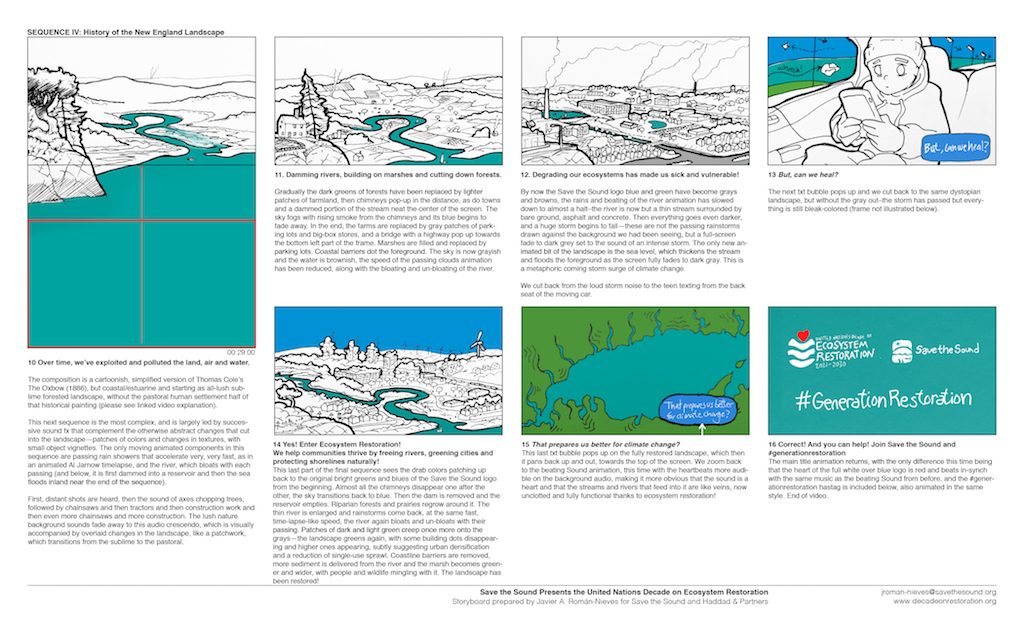
The animated feature is particularly aimed at youth who are increasingly leading advocacy efforts around climate and environmental justice. It highlights our geographical context through an aerial zoom-out from the roadside littering of a wetland to the whole Sound and surrounding lands. It then focuses on the power of ecosystem restoration to reimagine and transform our coastlines, cities, and rural areas into healthier, more naturally resilient landscapes for all.
Of course, imagining such a future is impossible without learning from the past and its mistakes. For this, we turned to art as another tool to understand the world, drawing on Thomas Cole’s 1836 painting “The Oxbow.” A founder of American landscape painting, Cole captures a pivotal moment of the United States by contrasting the pastoral landscape of colonial settlement in New England with an idealized image of untamed nature—the sublime of a stormy Eden awaiting the (supposedly) divinely ordained settlement of 19th century Manifest Destiny, both depicted through a view of a Connecticut River oxbow from Mount Holyoke in Northampton, Massachusetts.
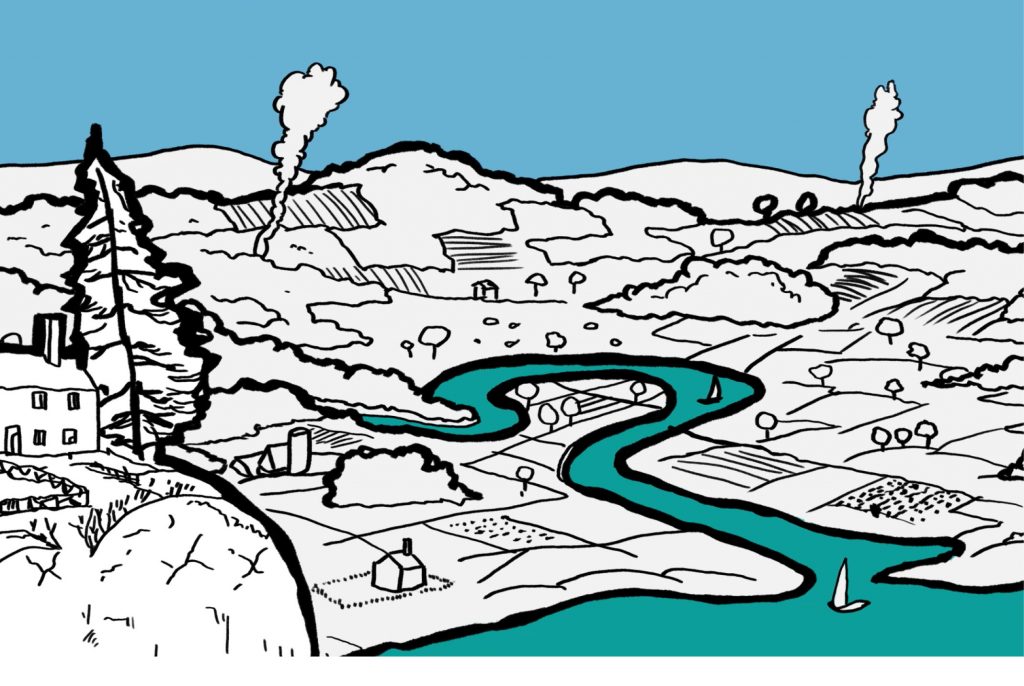
Pastoral Past
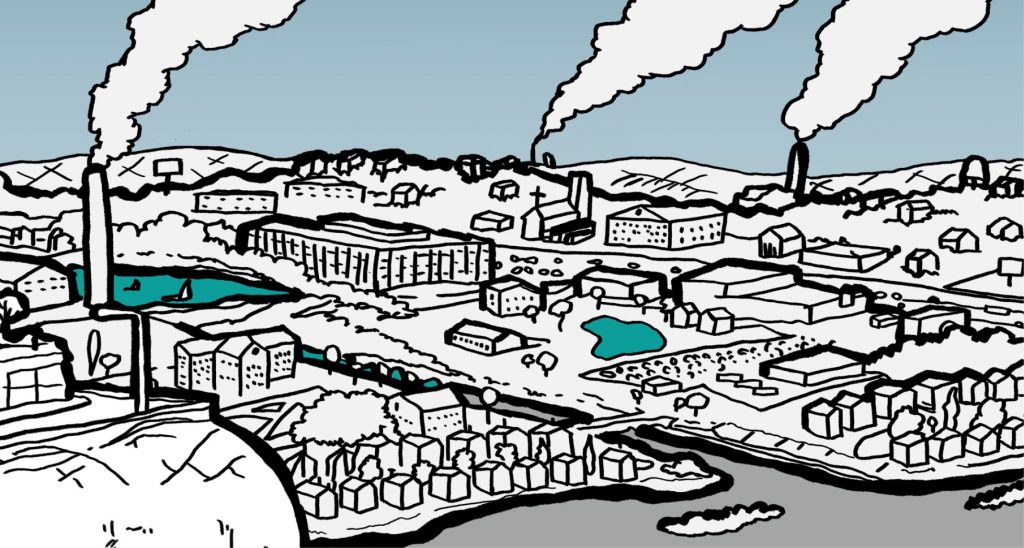
Post-Industrial Present
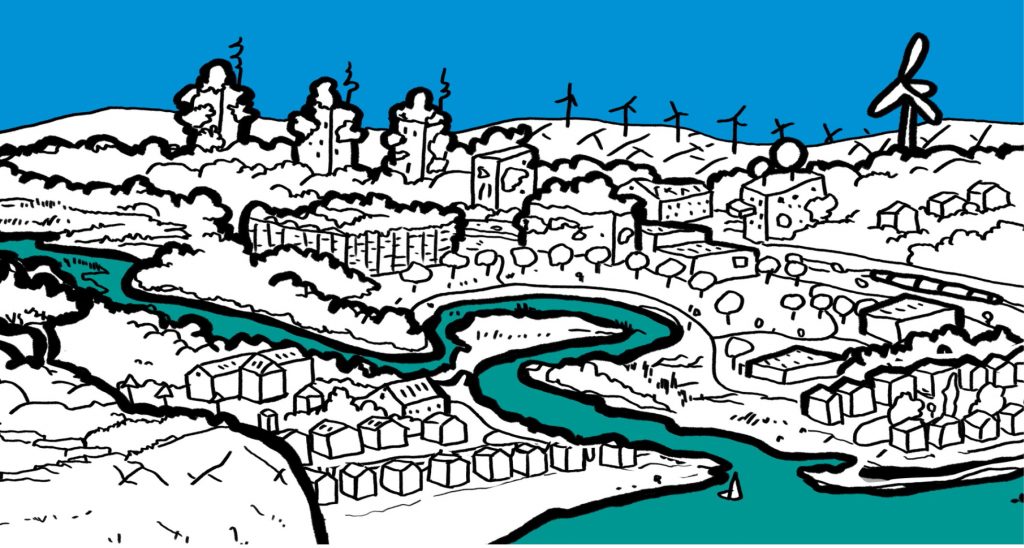
Sustainable Future
The second half of the #GenerationRestoration video brings a conceptual version of The Oxbow closer to the Long Island Sound shore, depicting an idealized coastal town and its natural surroundings undergoing almost three centuries of changes, from schools of fish migrating up a free-flowing river, through industrialization and into today’s post-industrial landscape, before imagining a future where reforestation, renewable energy, dam removals, green infrastructure, and living shorelines are the preferred pathway to our region’s survival and prosperity.
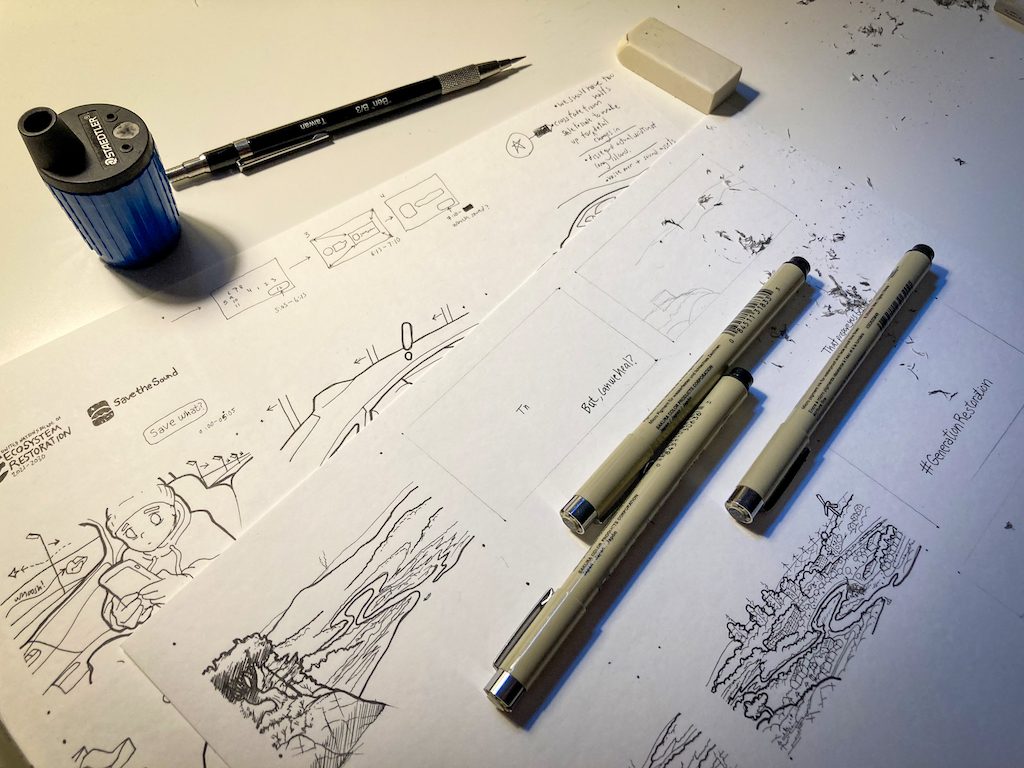
We can no longer fully avert climate change. The question now is whether we are willing to make the transformative changes needed to avert the worst of it, and to heal the harm already done? #GenerationRestoration charts a path that generates new economies and ways of living that will benefit us all.
Are we up to it? We say yes!
The UN Decade on Ecosystem Restoration runs 2021-2030. Visit Save the Sound’s YouTube channel or Facebook page to watch and share our video. ■



